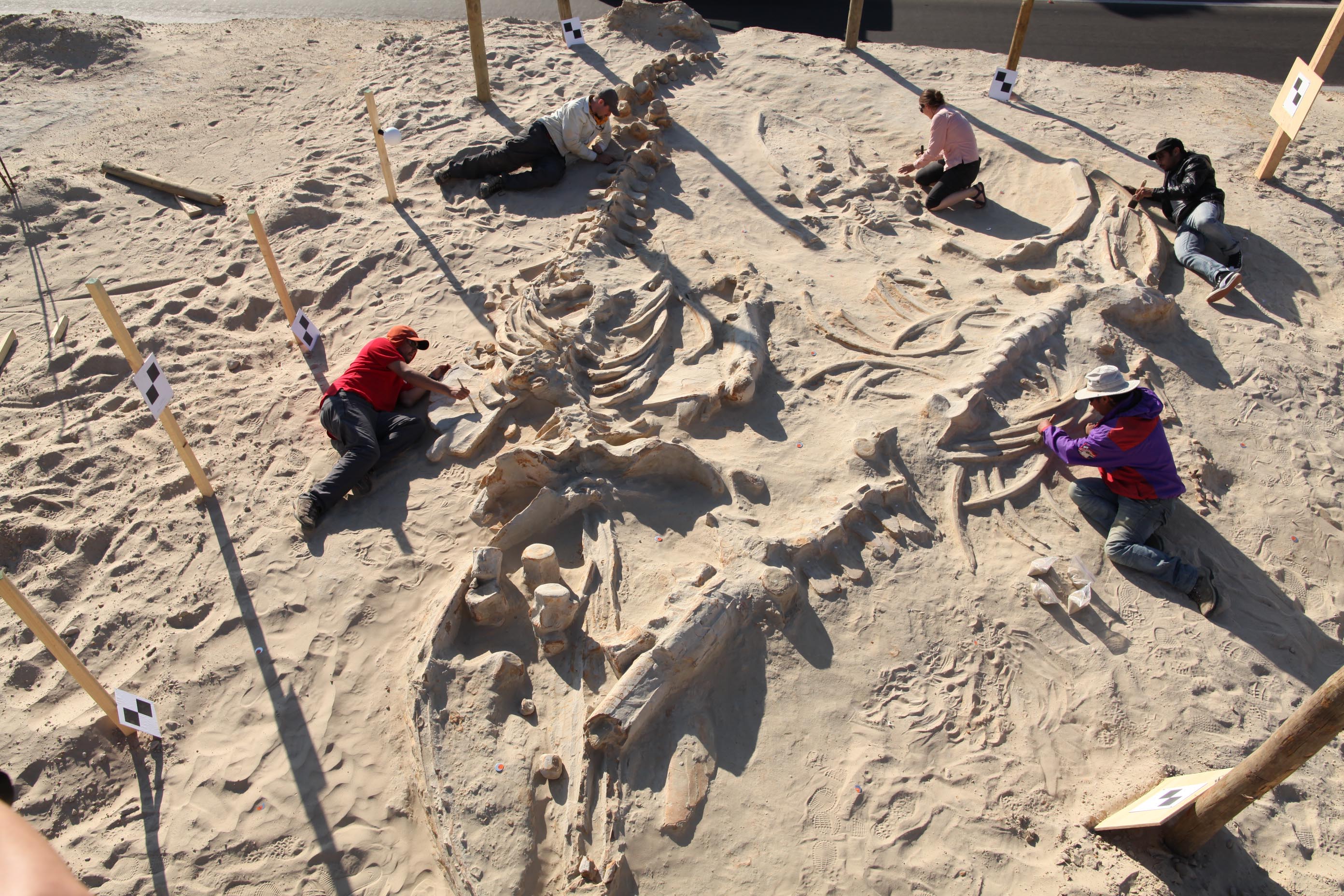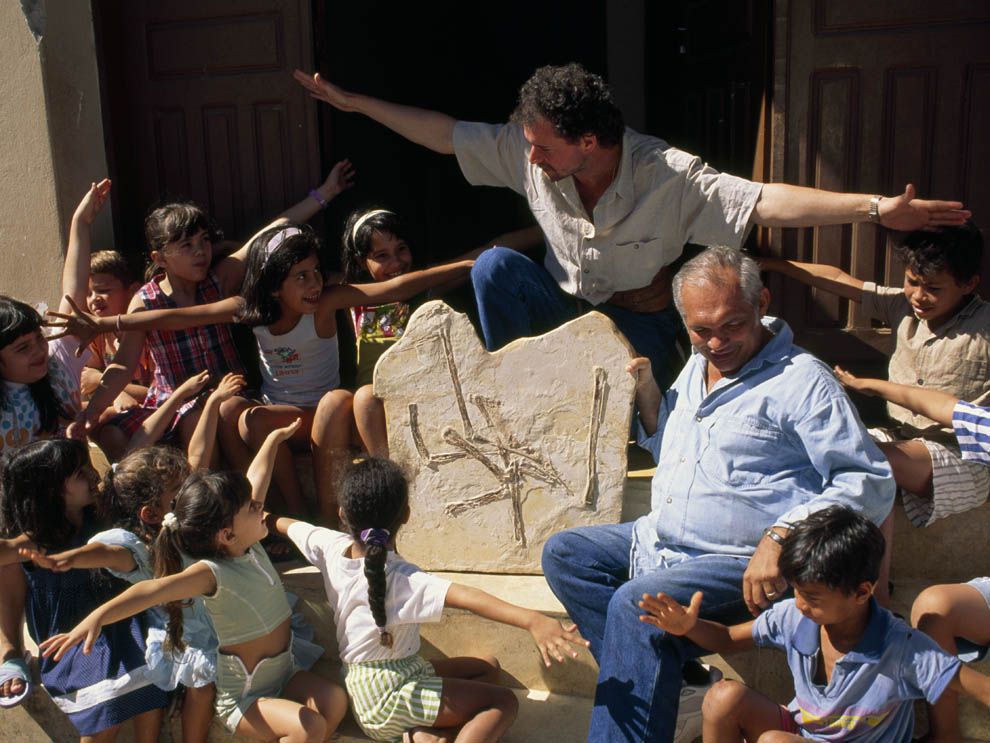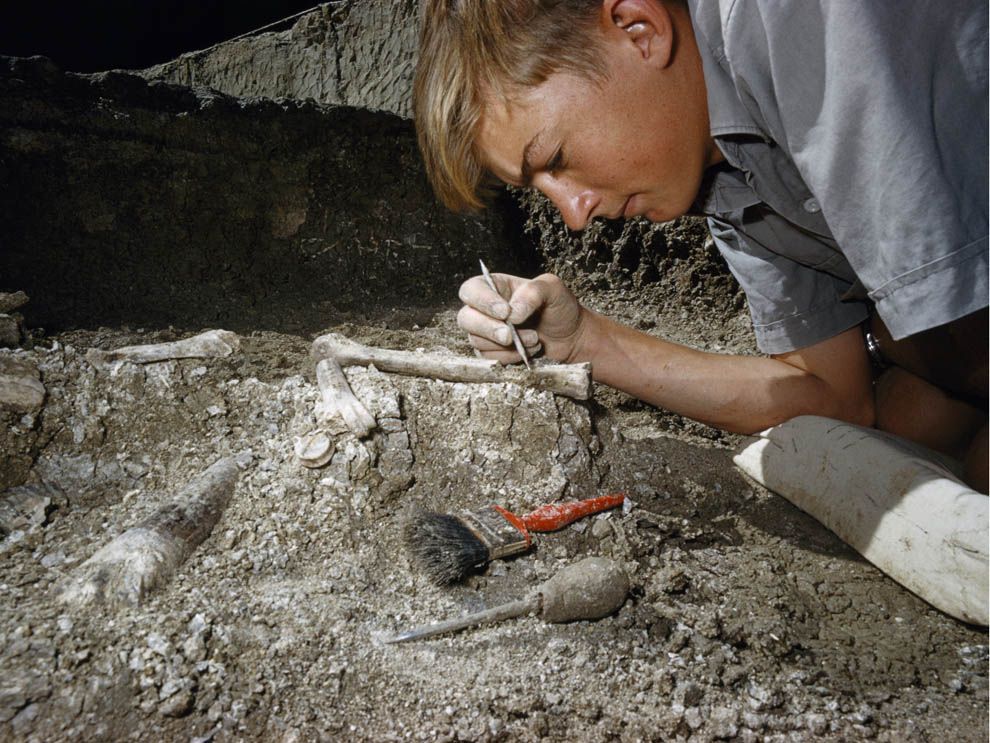Statements that explains the evidence that scientists obtained with the use of Fossil are. The organisms bones are similar to the bones of animal T which appears earlier in the fossil record.

Fossils Summarize How Scientists Study Earth S Past Environment And Diverse Life Forms By Examining Different Types Of Fossils Including Ppt Video Online Download
Be curious ask testable questions collect and analyze data.

. King PhD Cerro Coso Community College. They help piece together mysteries from the deep past and allow researchers to better understand life on Earth. Identify the key elements of the scientific process and the skills scientists use as they engage in the scientific process.
Rocks containing fossils of corals brachiopods cephalopods echinoderms blah blah blah must have been deposited in the ocean. Describe the key steps in each phase of the Paleo Pipeline. A-The fossil record can be used to date rocks.
It has following stages. Remember that engineers design creative tools to help us find fossils. Scientists called geochronologists are experts in dating rocks and fossils and can often date fossils younger than around 50000 years old using radiocarbon dating.
For scientists who love and study them fossils are more than mere curiosities. The process of fossilization 3. Remember that fossils are formed when an organism dies and is covered in soil fossilizing the hard parts of the remains.
Understanding the Fossil Context. Fossil Inferences Grades 3-5 Students will use their knowledge about fossils to arrange fossil pictures in sequence from oldest to youngest. The most common way to ascertain the age of a fossil is by determining where it is found in rock layers.
These researchers find and examine fossils to answer questions about the evolution biology and ecology the environment of extinct organisms. Scientists have long. Body fossils and trace fossils 2.
Teachers of grades K-2 can use class discussions during other activities to support students in understanding that fossils can help scientists understand what the world was like long ago. That is they belong to species that are no longer living anywhere on Earth. Thank you for the great question.
How do scientist use fossils to to find out the age of rocks. Fossils include body fossils left behind when the soft parts have decayed away as well as trace fossils such as burrows tracks or fossilized waste feces Figure 114. Usually it is rocks which determine the age of fossils but if the fossils discovered are already of a known age the age of the rock.
Instead other methods are used to work out a fossils age. They also study fossils to get new ideas. 1 Fossils represent the remains of once-living organisms2 Most fossils are the remains of extinct organisms.
The entire plant or some part of it lies in parallel to horizontal position. Answer 1 of 30. Luckily scientists love looking at strange things like that because they serve as important clues about the past.
Paleontology is the study of the history of life on Earth as based on fossils. First of all the wind or stem borne plant come into quiet water and become saturated. Paleontologists are people who study fossils.
The process of formation of fossil in the rocks is called fossilization. Fossils found in layers of sediment give us clues to Earths past. Scientists compare rocks to other rocks to determine their age.
In this lesson were going. Sometimes fossils tell scientists how the Earth has changed. Now it begins to sink.
Fossil record can be regarded as history of life which was documented through fossils. The Paleo Pipeline is an example of the scientific process used to study fossil evidence. Most of the methods are indirect meaning that the age of the soil or rock in which the fossils are found are dated not the fossils themselves.
Describe what scientists can learn about the past by studying fossils. In many cases the age of the rock can be determined by other fossils within that rock. Lee Anne Zajicek BA.
Types of fossil preservation 4. Studying fossils helps them learn about when and how different species lived millions of years ago. This method has been used to.
A scientist discovers a fossil of an animal and places it in the fossil record. Environmental information that you can learn from fossils can be as simple as determining whether the rocks that the fossils are in were deposited in the ocean a brackish estuary fresh water or land. Paleontologists find and study fossils all over the world in almost every environment from the hot desert to the humid jungle.
With over 40 million fossils residing in the Smithsonians National Museum of Natural History alone theres no reason to favor just one. They can tell how and what organisms lived at that time and how they live and thrived. Describe how the Age of Wonder advanced scientific inquiry and helped develop modern anthropological methods.
Which conclusion is most reasonable1 point scinece. Completeness of the fossil recordTwo fundamental natural factors govern the process of fossilizationThe environment where an organism diedThe materials that made up the organisms body when it was aliveFossilization. A fossil is any remains or trace of an ancient organism.
Fossils can be from a plant or animal and they can even be footprints or droppings. Fossils are the remains of plants animals fungi bacteria and single-celled living things that have been replaced by rock material or impressions of organisms preserved in rock. Many different types of scientists study fossils but generally they are called paleontologists.
Coprolite fossilized waste or feces from a meat-eating dinosaur. Fossils themselves and the sedimentary rocks they are found in are very difficult to date directly. 3 The kinds of fossils found in rocks of different ages differ because life on Earth has changed through time.
The picture may be smudged in places and has bits missing but fossil evidence clearly shows that life is very very old and has changed over time through evolution. The fossil record provides snapshots of the past which when assembled illustrate a panorama of evolutionary change over the past 35 billion years. Paleontologists use fossil remains to understand different aspects of extinct and.
These include radiometric dating of volcanic layers above or below the fossils or. Identify the different types of fossils and describe how they are formed. Nature of the fossil record 1.
Three concepts are important in the study and use of fossils. Which are the names of scientists who study fossils. E-Scientists can figure out what ancient living things ateF-Pollen and seeds help provide clues about ancient climates.

Scientists Say Paleontology Science News For Students

Smithsonian Insider Fossils Help Scientists Build A Picture Of The Past And Present Smithsonian Insider


0 Comments